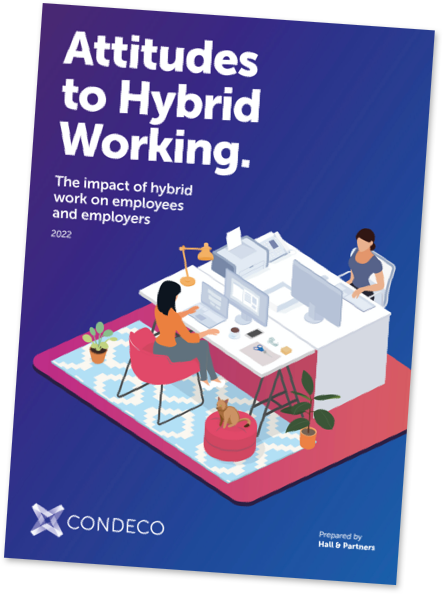
Never before has it been more important for businesses to look out for their employees. Amidst a competitive job market and a pandemic that has led many employees to reconsider their career trajectory, companies that don’t make an effort to support their workforce will find it harder and harder to hold onto their top talent.
In 2023, businesses are still getting to grips with the new ways of working as the clamor for flexible work gains more and more traction. This blog explores five key trends that will shape employee satisfaction and help employers like you understand what you need to do and what your workforce is expecting of you in the following months:
1. Happier workers are productive workers
It may seem at face value that ensuring employees are happy at their jobs is a secondary consideration: a ‘nice to have’ asset that isn’t as important as making sure the job gets done. But the truth is that the two factors are deeply intertwined.
Research from the University of Oxford Said Business School has found that:
This demonstrates that there is a direct link between employers making an effort to satisfy their workforce, and receiving an end product from it in the form of getting more out of existing human resource.
2. Flexible work is becoming a must
Employees are demanding more flexibility in how they work, including deciding when they work from home and when they work from the office. Whereas in the past, employees might have felt dissatisfied if they were denied flexible work but still grudgingly got on with the job, times have changed: flexible work is fast becoming a deal-breaker.
Research by EY has found that as many as half of employees will start looking for alternative employment if their current employer won’t offer them flexible work. Some businesses may still be reluctant to cede control over working arrangements to their workforce, but they will have to face up to the reality that they risk losing top talent if they bury their heads in the sand.
3. Employee well-being remains in focus
The last few years have been tough on everyone in many ways. Faced with long spells of isolation, and potentially compromised remote working in small or shared accommodation, the last two years have mentally taken their toll on lots of employees.
The good news is that employers have picked up on the issue. According to the Chartered Institute of Personnel and Development in the UK, 82% of employers are either concerned or extremely concerned about their employees’ mental health. This is fuelling increased adoption of employee assistance programs alongside the freedom that flexible work provides. However, the CIPD notes that more can be done in training managers to deal with employees’ mental ill health.
4. Employee retention is a major cost saving
Keeping hold of the best and brightest isn’t just important operationally – it can also make a big difference financially. Zenefits has found that among mid-size businesses in the US, 63% say retaining employees is harder than hiring them. And when it costs an average of $5115 to hire and onboard a new employee, according to findings from SHRM and Training Magazine, the implications of high employee turnover are clear.
All this shows that employers must take steps to engage their employees in their jobs, and HubSpot found that 69% of employees say they’ll work harder if they feel more appreciated.
5. Adaptability for an uncertain future is essential
All of the above should be framed in the context of a fast-changing business world still dealing with the aftereffects of the pandemic. There is no way of knowing what the world will look like when 2023 rolls over into 2024, so organizations must be prepared for every eventuality.
That could mean sending employees back to working from home at short notice or adapting to new protocols and safety rules imposed immediately. This is where technology like workspace booking software, which can help enforce those rules and prove compliance, can be so helpful, along with cloud migration that opens up remote access to vital data and applications.



